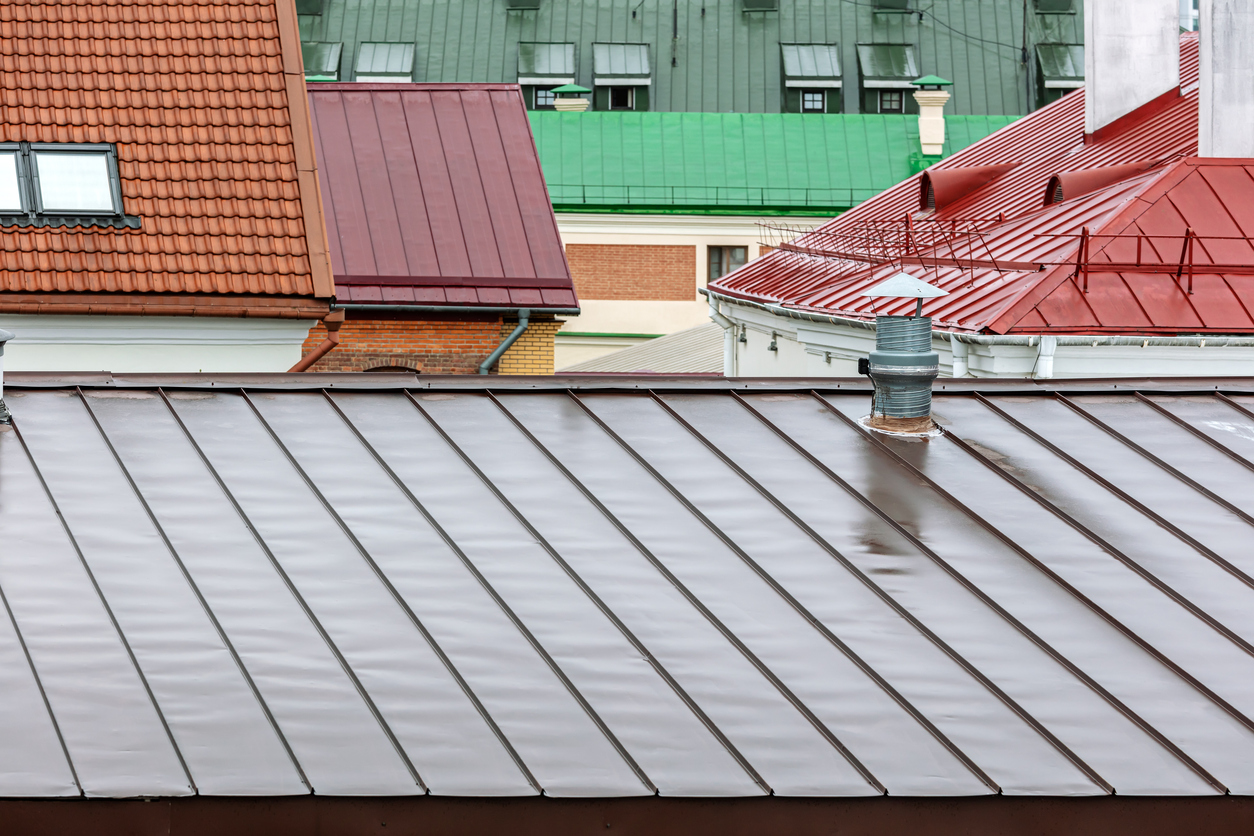Understanding the lifespan of different roofing materials is key to optimal home maintenance. Asphalt shingles generally last 20-25 years, while wooden shingles and shakes provide around 30 years of service. Metal roofs can endure for 40-70 years, whereas slate, copper, and tile roofs can last over 50 years. Knowing these timelines assists homeowners in planning necessary upkeep.
The need for regular roof repair and potential roof replacement arises as it ages. The lifespan of the roofing material plays a pivotal role in determining the frequency of such overhauls. However, many homeowners are unaware of the expected longevity of different roofing materials, which can lead to unexpected costs and maintenance issues.
The roof, the primary barrier protecting your home from the elements, can vary widely in its lifespan depending on the material used. Ignorance of the average lifespan of these materials could result in premature degradation, leading to costly repairs or even a complete replacement before expected. This can throw off your home maintenance budget and potentially expose your home to damage from the elements.
To avoid such unexpected expenditures and problems, it is essential to understand the lifespan of different roofing materials.
In this article, we explore the lifespan of different roofing materials so you can plan accordingly.
The Lifespan Of Different Roofing Materials
Understanding the lifespan of roofing materials is a crucial aspect of owning and maintaining a home. The longevity of the roof is not only integral to the safety and comfort of those living within but also plays a significant role in the financial planning for home maintenance and potential resale value.
The type of roofing material used can drastically influence the longevity of the roof. For instance, asphalt shingles, the most commonly used material, typically last between 20 to 25 years. On the other hand, more durable options like metal, slate, copper, and tile roofs can have lifespans exceeding 50 years. These discrepancies in longevity demand varying levels of investment and maintenance, thereby affecting the homeowner’s financial obligations and planning.
Lack of understanding about the lifespan of different roofing materials can result in unexpected costs, often amounting to thousands of dollars. Premature degradation can necessitate expensive repairs or even a complete roof replacement well before anticipated. Furthermore, structural damage due to a worn-out or damaged roof can lead to more extensive issues such as water damage, mold growth, and decreased energy efficiency, increasing the cost burden on homeowners.
Additionally, the knowledge of your roof’s lifespan can be beneficial when you plan to sell your home. Potential buyers are more likely to invest in properties where large-scale maintenance or replacement costs are not imminent.
In essence, understanding the lifespan of your roofing material empowers you to anticipate and plan for necessary maintenance, avoid unforeseen costs, and maintain the overall health and value of your home.
Asphalt Shingles – Up To 25 Years
One of the most common roofing materials used in the US right now is asphalt shingles. They offer a lot of benefits to you as a homeowner, so you’re very likely to be considering them. Out of all the roofing options out there, they are typically the cheapest. That’s always important to consider if you’re thinking about the cost of your new roof.
The downside to them is that they don’t typically last very long, compared to other roofing materials. You’ll see that when they are well cared for, they can last for up to 25 years. After that point, you’ll need to replace it again. If you don’t want to be thinking about replacing them again so soon, then asphalt shingles won’t be for you. If you are on a budget though, and need a new roof, then they are an excellent option.
Built-Up Roofing – Up To 30 Years
Built-Up Roofing, or BUR, is another option that is typically on the cheaper end of the spectrum. As such, it’s another good option for a homeowner on a budget. These roofs are created by alternating layers of roofing felt and waterproof layers with hot tar or bitumen. Thanks to its sturdy nature, it’s most often used on flat roofs or roofs with a low pitch.
These roofs also have a shorter life span, however, lasting up to 30 years with the right care. Again, they’re a great option if you are on a budget and need to replace your roof, but if you want something longer-lasting you’ll need to keep reading.
Wood Shingles And Shakes – Up To 50 Years
Wooden shingles and shakes are a popular roofing option in some areas thanks to their aesthetic appeal. They offer a rustic and unique look to your home, which adds to the curb appeal and looks great with the right care. If they are well looked after, these should last for up to 50 years.
While there’s a lot to recommend wooden shingles and shakes, you will have to do a lot of work to get them to last the full 50 years. In some states they aren’t legally allowed to be installed as they aren’t capable of resisting fire. Depending on where you live as well, they’ll be at risk for developing issues due to humidity and rain.
Metal Roofing – Up To 75 Years
One option that’s becoming very popular for residential properties is the metal roof. A standing seam metal roof offers a lot of benefits, such as having a Class A rating for fire resistance, needing very little maintenance, and being very durable overall. They can even be made to mimic other roofing materials like slate, if you want the look without the weight or upkeep.
A metal roof that has good maintenance can last as long as 75 years, although many roofs average 50 before they need to be replaced. That’s still a good long lifespan for many, so you can get the most out of your roof. A metal roof will be pricier than others though, so that’s something that you need to keep in mind when you’re shopping around.
Clay Or Cement Tiles – Up To 100 Years
In many areas in the US, clay tiles are a very common sight on homes. These tiles are most commonly made with terracotta, also ceramic tiles made of fired clay is also common. Concrete or cement tiles are another option that mimic the properties of these tiles at a lower price. They’re well known for their durability, which is something you’ll want in your roof.
A good clay tile roof will routinely last 100 years, if given the proper care. There isn’t too much that can damage them, as they can take wind, rain, and UV rays. However, they can be cracked easily when walked on, so you’ll need to be wary of this. Plus, they’re a lot heavier than other roofing materials, which will lead to a lot of roofs needing to be reinforced before you install them.
Slate Roofs – Up To 100 years
Slate roofs are a highly desirable roof type for many, and it’s not hard to see why. As a natural material, each slate tile is going to have different patterning and colors, so no two slate roofs are totally alike. You’ll also see that slate is naturally predisposed to splitting into flat slabs, so it’s ideal for roofing. Like clay tiles, it’s also impervious to a lot of damage that you’d get with other roofing types.
Again like clay tiles, you can easily get 100 years from a properly installed and cared for slate roof, if not more. If you’re considering them, you’ll need to know that they are one of the more expensive options out there for roofing. You’ll also find that they need to be replaced quickly if they ever crack, to maintain the integrity of your roof.
Working with a Professional
Understanding roofing materials and their lifespan is just one aspect of maintaining your home. Ventura Roofing Co offers comprehensive roofing services, ensuring your roof is always in top condition.
With our professional, knowledgeable team, we’ll help you navigate the complexities of roofing materials and their maintenance.
Reach out to Ventura Roofing Co today and experience the peace of mind a sturdy, well-maintained roof can offer.
Which Roofing Material Is Right For You?
There are a lot of options out there when you’re considering replacing your roof. How do you know which one is right for you? It all depends on what you need. If a low budget is the most important aspect of a roof, then asphalt shingles will give you what you need. If you want something that has longevity, then a metal, clay, or slate roof will be best.
There’s a lot to consider when picking a roof, and longevity is just one of them. Keep these life spans in mind when you pick a roofing material, so you get one that’s right for you.

